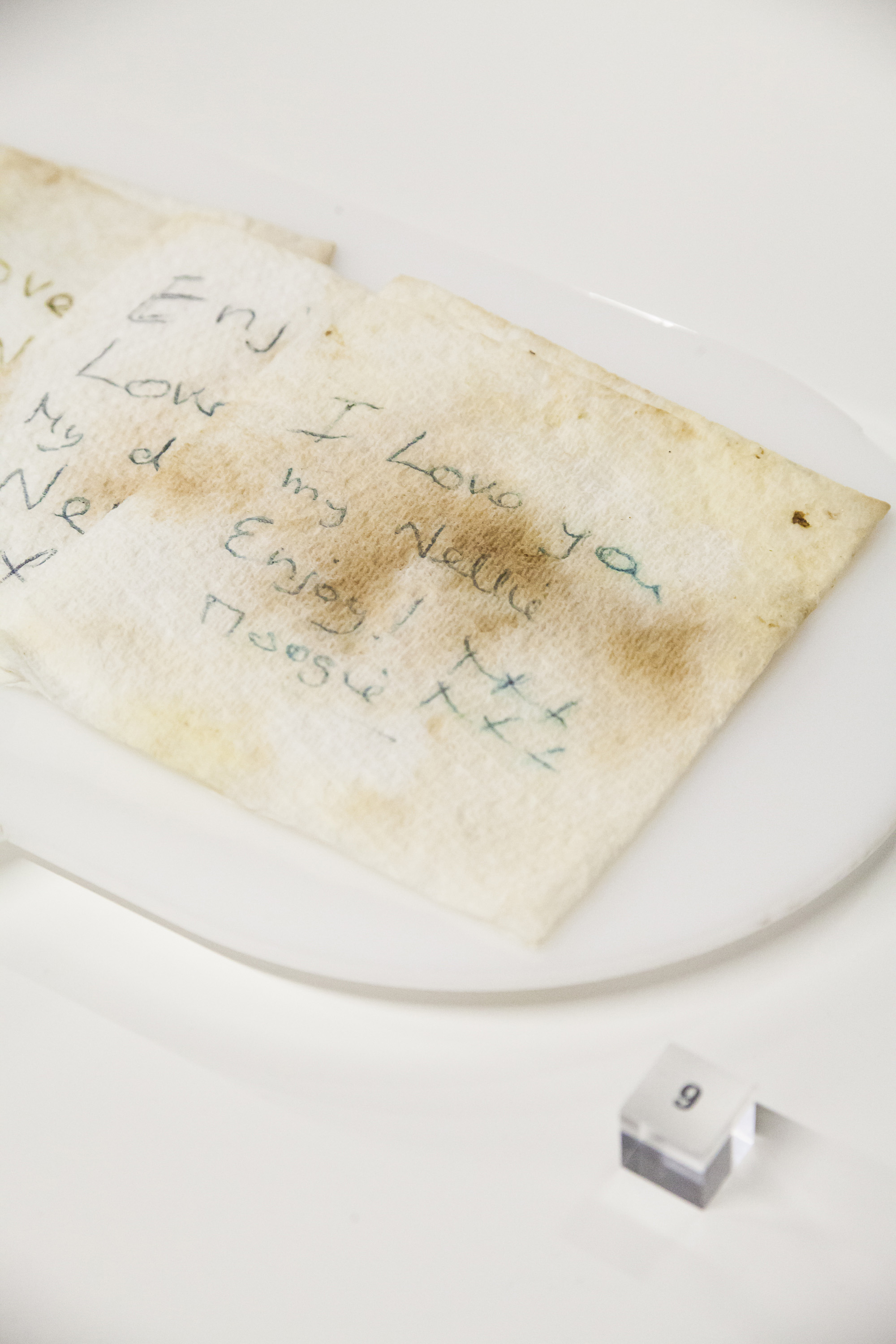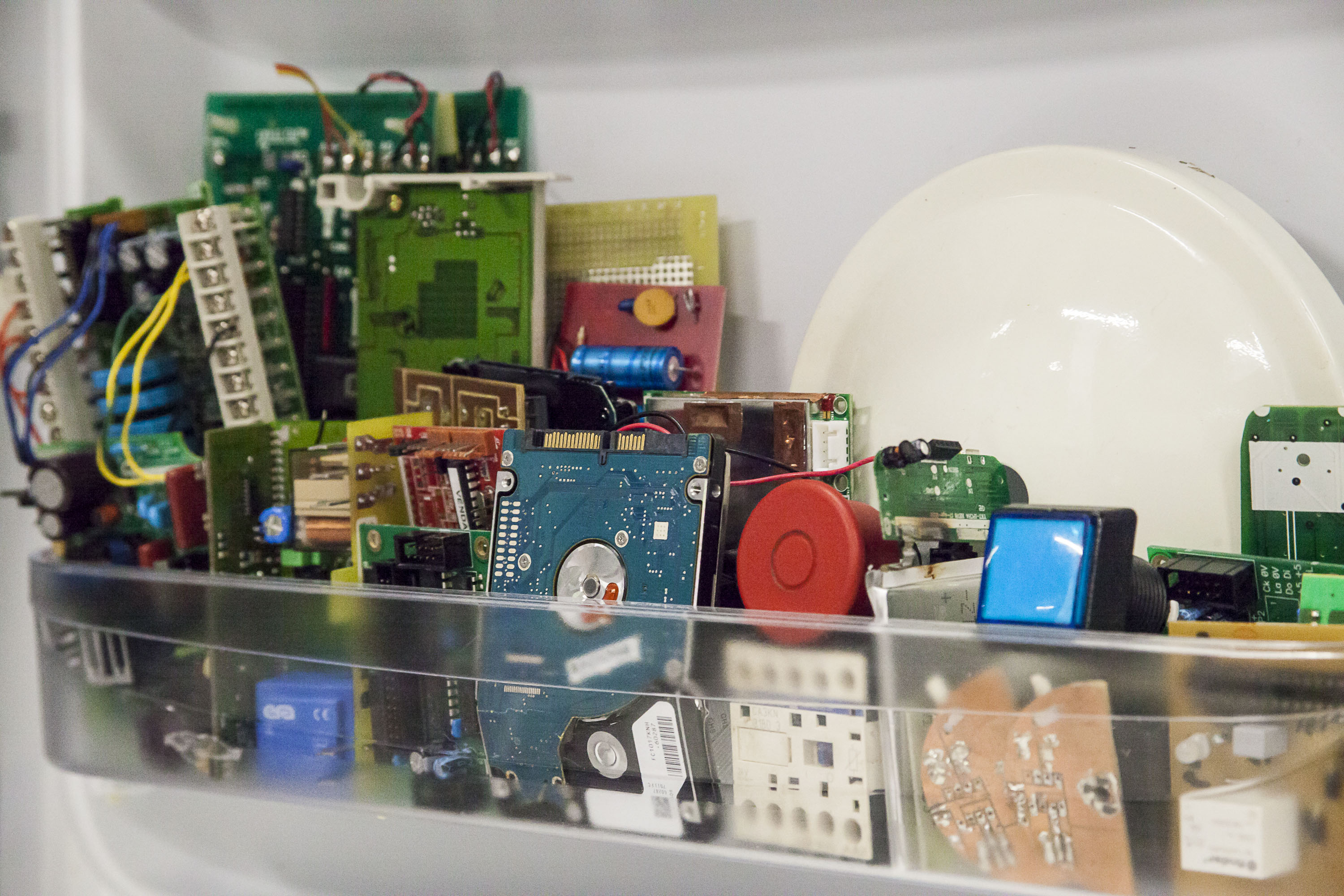In this week’s blog linked to The Rubbish Collection, Curator Sarah Harvey follows some of the unexpected stories and personal objects that were found in the Museum’s bins. As the exhibition nears its end, what will happen to all this ‘rubbish’ afterwards?
Much of the feedback I have received about Joshua Sofaer’s The Rubbish Collection, from both visitors and staff, has been about the surprising personal items and stories that have come out of the bins. When we were first carrying out trials for the project it was one of the unexpected outcomes of the documentation process. This revelation, that sorting through waste was like a form of contemporary archaeology, inspired Joshua to invite the public to take part in the documentation process so that visitors also had the chance to experience the wonder of piecing together those narratives.

The stories we found in the bins ranged from the very general (like what the favourite crisp brand amongst visiting schoolchildren was) to more Museum-specific (like which new galleries were under development and which events had taken place). Even the volume told us how busy the Museum had been on a given day. There were also very personal stories such as notes put into someone’s lunchbox by their partner, a surprising number of medicines, and children’s drawings of their day out. In a painfully frank teenage love note, the author proclaims that they are not worth the attention of their crush and recommends they should go out with someone else. We even found a pregnancy test (negative; was its user disappointed, happy or relieved by that result? We’ll never know).

We don’t often think about our rubbish, full stop, let alone consider it as a personal document of our lives. Archaeologists have long been aware of this when piecing together a picture of the lifestyles and living conditions of people’s past, as have the paparazzi in finding out private information about celebrities and public figures. Looking at the landfill of the last few decades, I imagine, will tell a story of the rise of plastics and packaging, the dominance of certain supermarkets and brands, the affordability of electrical goods, our increasingly global markets and the enormous growth in waste generally. Hopefully, as with the Science Museum’s bins, an examination of the more recent landfill should document a more positive change, that of recycling and our increased awareness of the value that materials still hold. The next step may be mining our municipal dumps to try to recover some of those precious materials that are now scarce in the natural world, such as the rare earth metals that are so important in the manufacture of electronic goods.

And what will become of all the rubbish and materials on display in The Rubbish Collection? Well, the materials, like the paper reels, plastic pellets, metals, and fertilizer, will be returned to the companies that lent them to us, to continue on their recycling journey to become new products. Electrical goods will be sent to specialist recycling companies to separate any reusable parts and recycle what cannot be salvaged. The items that we retained from the rubbish bags, though many would have originally gone to incineration if we had not intervened in their journey, will be recycled wherever possible. Medicines will be taken to a pharmacy for safe disposal, usable stationary will be returned to offices and the 16.5 pairs of shoes, 2 suits and other items of clothing will be taken to charity shops.
Phase 2 of Joshua Sofaer’s The Rubbish Collection runs at the Science Museum until 14 September 2014.